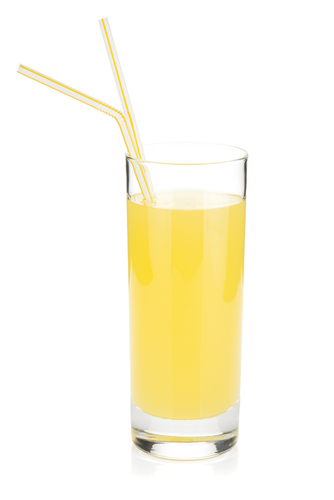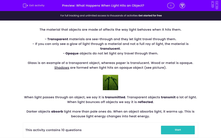The material that an object is made of will affect the way light behaves when it shines onto the object. Materials can be classified into three types:
- Transparent materials are see-through and they let light travel through them.
- If you can only see a glow of light through a material and not a full ray of light, the material is translucent.
- Opaque objects do not let light any travel through them.
You also need to know the processes of transmission, reflection, and absorption and how they relate to each type of material.
Glass is an example of a transparent object.

We can see through a window because of its transparency. When light passes through an object, we say it is transmitted. Transparent objects transmit a lot of light.
Now take a look at the glass of juice below:

The glass itself is transparent, but the juice and the straws are translucent. They will only allow some light to pass through. For example, you can see your hand on the other side of the glass when you pick it up, but you cannot clearly see it. When light bounces off objects, we say it is reflected. Translucent objects reflect some light as well as transmit some.
Finally, opaque objects prevent any light passing through. Shadows are formed when light hits an opaque object, as shown below.
.jpg)
Your body is opaque, which is why sunlight cannot pass through you to reach the ground.
Absorption is when light is completely 'taken in' by an object and doesn't pass through or bounce off. This is the process that occurs in opaque objects.
Darker objects absorb light more than pale ones do.
When an object absorbs light, it warms up. This is because light energy changes into heat energy. This is why you feel cooler on a sunny day if you wear white clothing, compared to black clothing.
Let's have a go at some questions now.








